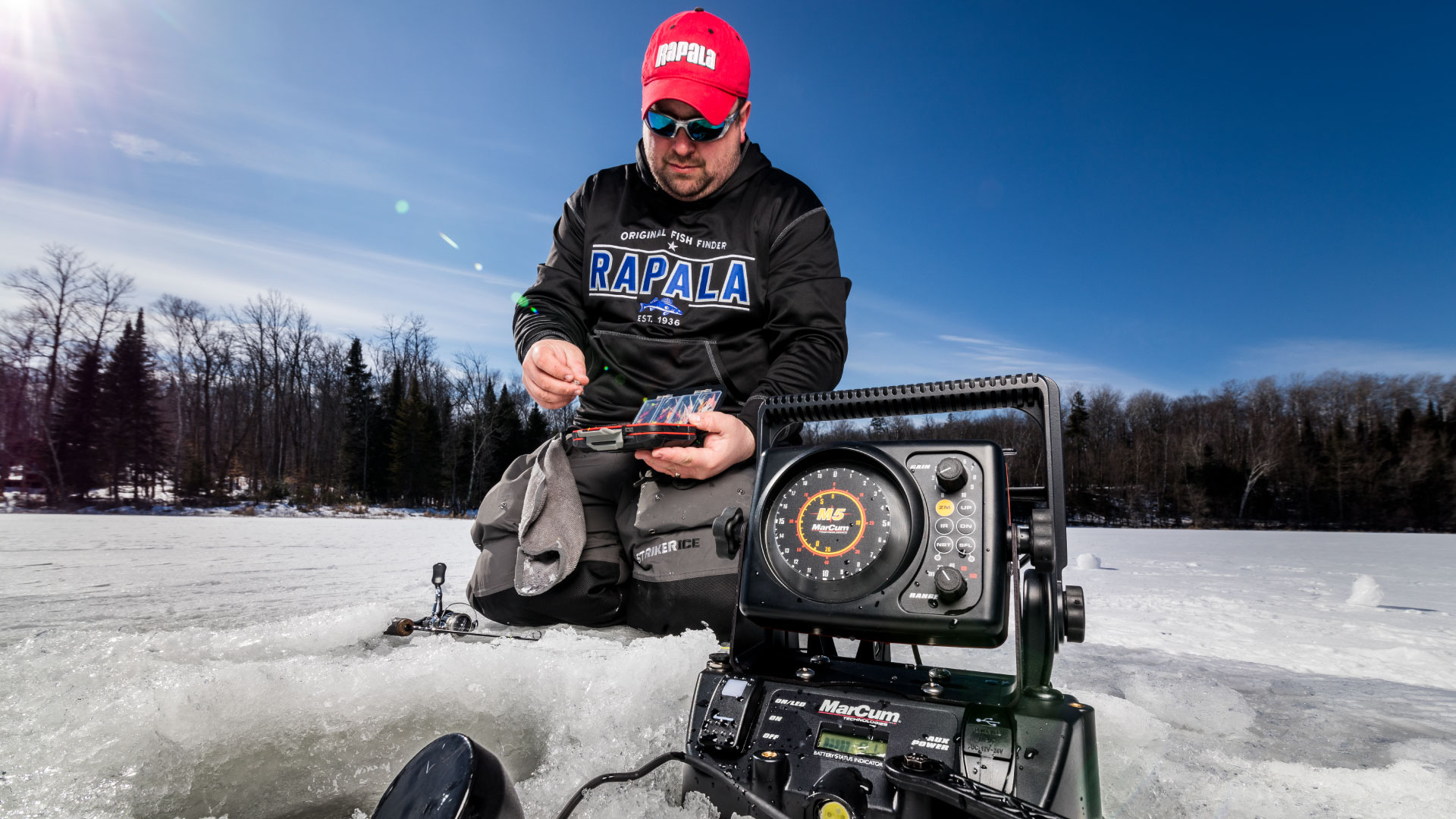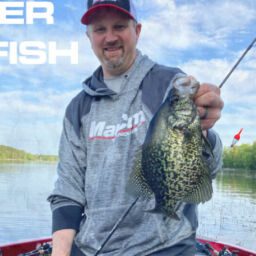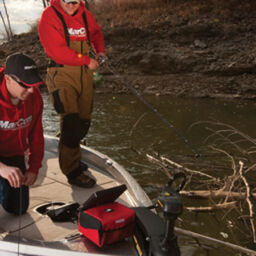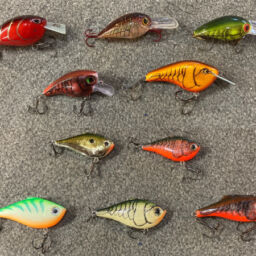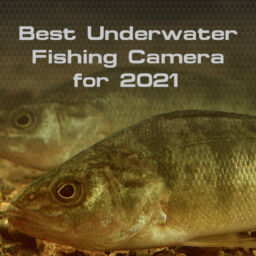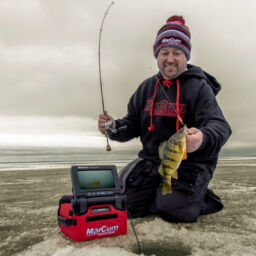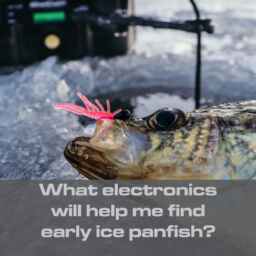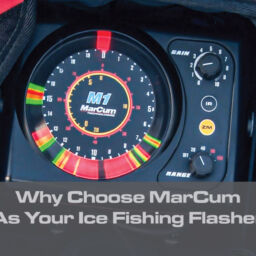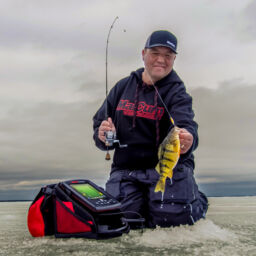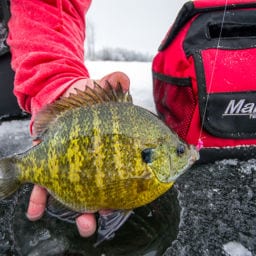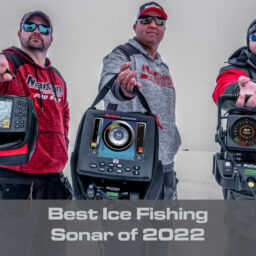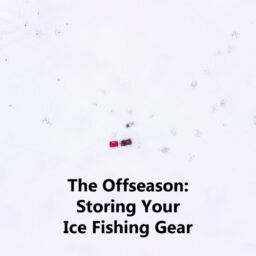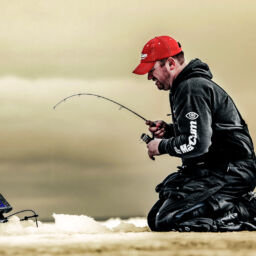FINDING FISH ON ANY GIVEN LAKE
Bluegill
Bluegill are highly sought after fish through the ice. This is largely due to large populations, the fact that they are willing biters and they are excellent table fare. If an angler is going to put work in on the ice they want to be rewarded with some fish and bluegill usually come through. Oftentimes the best bluegill spots are the deepest part of a backwater bay, particularly if there is some type of cover or weeds nearby. Most lakes will have “community” spots where every year the bluegill will congregate.
Crappie
Crappie are probably the trendiest fish to pursue. If there is a hot bite out somewhere it doesn’t take long for the multitudes to find out about it. They are also pretty willing biters and some of the tastiest fish out there. Crappie can commonly be found in and amongst the good bluegill areas although the crappie will be found higher in the water column. Crappie will also be found suspended over deeper basins throughout any given lake. This makes them relatively easy to find with your flasher or digital sonar. Find your way out onto the basin and drill a hole and look for suspended fish. When you get on top of them then drop your presentation down right away. Be warned, because it is a basin with no structure to hold them in a certain area, a lot of times these fish will roam about. The challenge will be to stay over them the best you can by drilling extra holes and hole-hopping. Using lithium batteries in your electronics makes this much more doable. Do your arms and back a favor and replace the heavy lead-acid battery in your electronic unit.
Perch
Perch can be found in shallow weeds and also out deep on structure or on deeper flats. Many of the large lakes within the ice belt will have sizeable schools of keeper sized perch out in the main lake on large flats. They find their safety in numbers and will roam the depths for bugs and minnows. Perch can be found in similar structure on smaller lakes but will also occupy weed beds wherever they are on a given body of water. On most lakes, the weedbeds will be anywhere from three to ten feet of water.
Northern Pike
Northern Pike can literally be found all throughout any lake. They can be found in the shallow weeds as they will look to ambush baitfish and any panfish that occupy it. They also will roam in the mid-depths and can be found outside main lake weedlines and breaklines. In lakes that have pelagic baitfish they will also roam out near structure commonly occupied by walleye. Most often a target depth range of ten to twenty feet will get you close.
Walleye
For finding walleye you need to use the right tools. Walleye are bottom oriented so it tends to make it a little more difficult to quickly locate where the schools are with electronics. Underwater cameras can take the guesswork out of what kind of fish you mark with your electronics. Sometimes anglers can get confused with a big school of suckers thinking they landed on a school of marble eyes.
The key for walleyes is targeting the correct depth and fishing the right structure. Most walleye will be from fifteen to thirty-five feet of water. The best tools for finding the right depth are utilizing a GPS and map chip so you don’t have to drill dozens of holes to find the right spot. GPS units such as the MX-7GPS allow anglers to find the right spot, particularly when utilizing the best Navionics map chip for the area with the unit. This will allow anglers to get right on the edge of a deepwater hump or get out onto the extents of a main lake point with good precision. The best part about the MX-7GPS is that first-class sonar is also built into the unit so once you get to the spot you can start fishing.
Lake Trout
Lake Trout are the Orca of freshwater. With incredible eyesight and well designed body baitfish do not stand a chance with this apex predator. Lake Trout inhabit cold and oxygen rich lakes and reservoirs. In the winter, Lake Trout can literally be found anywhere in the lake from several feet of water all the way down to one hundred feet. The key will be to find baitfish to find the best numbers of fish. Lake Trout are often fished near steep breaks near the main lake basin and sometimes over the deepest part of the basin provided that pelagic baitfish is present. Use a good sonar/GPS combo such as the MX-7GPS to find applicable structure on the map. The unit also has the power to read your bait down to three hundred feet of water.
Within the ice-belt, there are many species of fish worthy of pursuing. With all the advancements and great technology at an angler’s disposal all you need to do is make a plan and go after it. Be safe, have fun and good luck.


